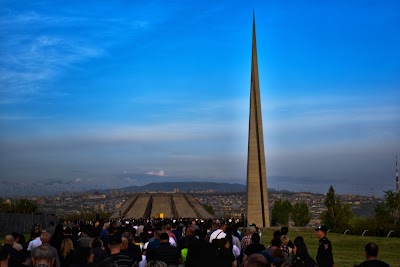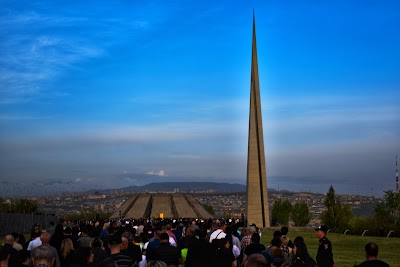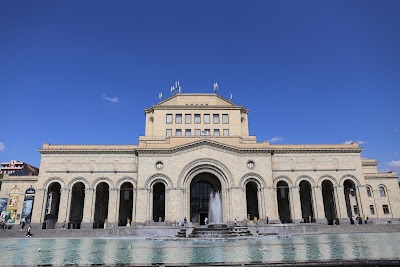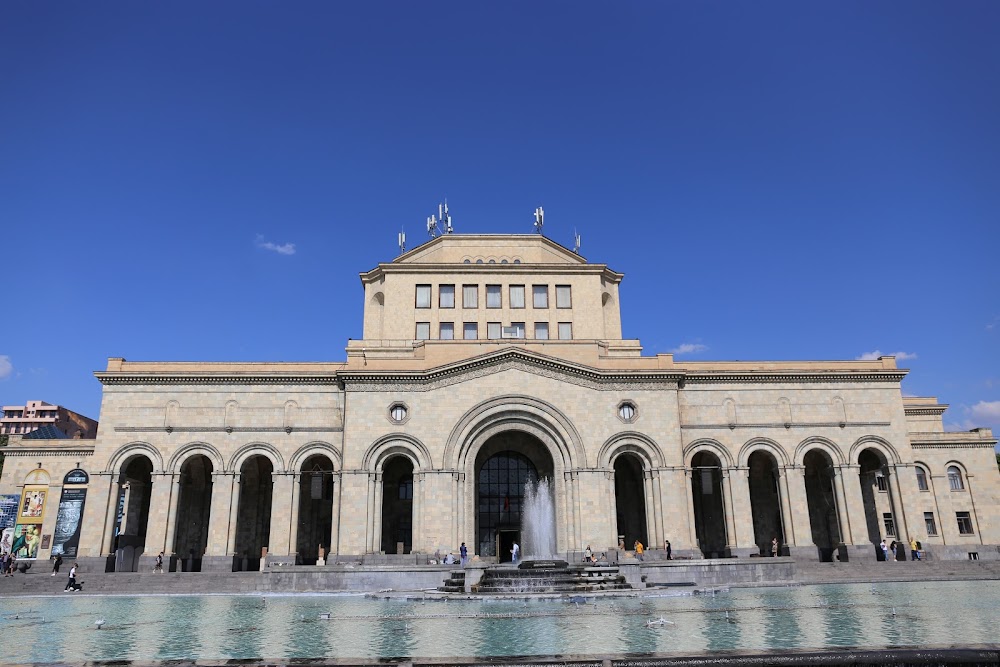Opera Theater (Օպերայի թատրոն)
Overview
The Armenian National Opera and Ballet Theatre, located in the heart of Yerevan, Armenia, is not only an architectural masterpiece but also a cultural landmark. Its history traces back to the early 20th century, a period when Armenia was navigating through significant historical upheaval. The principal architect, Alexander Tamanian, was a visionary who played a crucial role in defining modern Yerevan’s architectural landscape.
In 1924, Tamanian's innovative design for the theatre was awarded a grand prize at an international architectural competition. His ambition was to create a venue that harmoniously blended Armenian medieval architectural elements with the grandeur of European opera houses. The theatre was conceived with a unique fusion of rationalism, traditionalism, and modernism, characteristics that would come to define much of Yerevan’s architectural style.
Construction began in 1930, during a time when Armenia was a part of the Soviet Union. Despite facing significant economic and political challenges, the commitment to realizing the Opera House remained steadfast. Craftsmen and laborers from across the Soviet Union united to bring Tamanian’s visionary blueprints to life, utilizing local materials such as Armenian tuff stone, renowned for its durability and aesthetic appeal.
The theatre's first phase, encompassing the main hall and stage, was completed in 1933, allowing it to open its doors to the public and host performances while construction continued. Almost immediately, the opera and ballet theatre became a cultural focal point for Yerevan's residents, symbolizing hope and resilience during turbulent times.
The theatre was fully completed in 1953, two decades after its initial phase. This delay was due to the scale of the project and interruptions caused by World War II. At last, the theatre was unveiled, showcasing elaborate sculptures, grand staircases, and intricate details that exemplified Tamanian’s artistic vision.
The main auditorium, known as the Aram Khachaturian Concert Hall, is designed to accommodate a diverse range of cultural events, including operas, ballets, concerts, and plays. With its superb acoustics, spacious stage, and ample seating capacity, it stands out as one of the premier venues in the region.
In addition, the theatre houses the Alexander Spendiaryan Opera and Ballet National Theatre, named after the illustrious Armenian composer. This smaller venue offers a more intimate setting, perfect for personal performances, further enriching the cultural offerings of the Opera House.
Over the decades, the Armenian National Opera and Ballet Theatre has undergone several renovations to preserve its grandeur and functionality. The most significant renovation occurred in the early 2000s, introducing modern technological advancements to the stage while maintaining the theatre’s historical essence.
Today, the Armenian National Opera and Ballet Theatre stands as a monument to Armenian culture and heritage. It has hosted countless performances showcasing both local talents and international artists, playing a vital role in promoting and preserving Armenian performing arts while providing a platform for emerging artists.
Residents of Yerevan regard the Opera Theatre as more than just a structure; it is a living entity where the past and present converge. It resonates with the echoes of centuries-old traditions, seamlessly blending with contemporary artistic expressions. The theatre continues to inspire, entertain, and educate, upholding the timeless legacy envisioned by Alexander Tamanian nearly a century ago.









